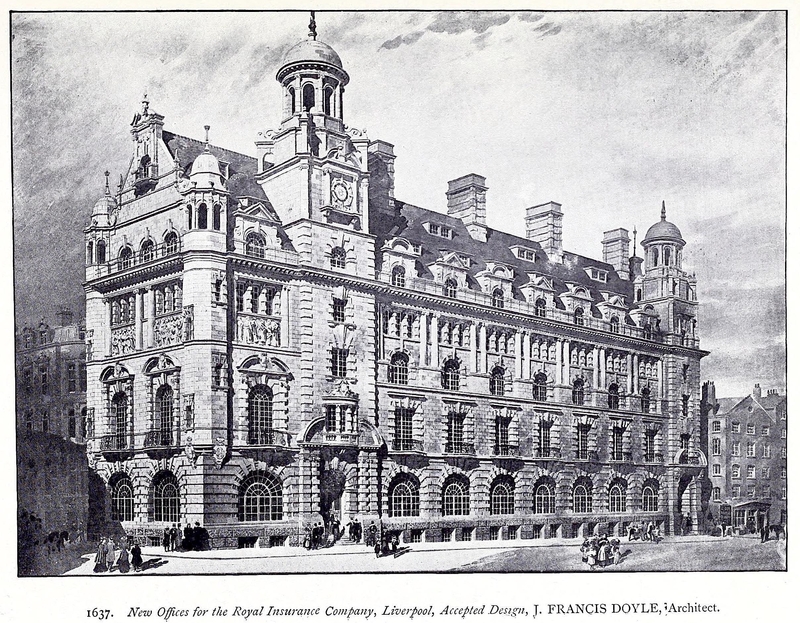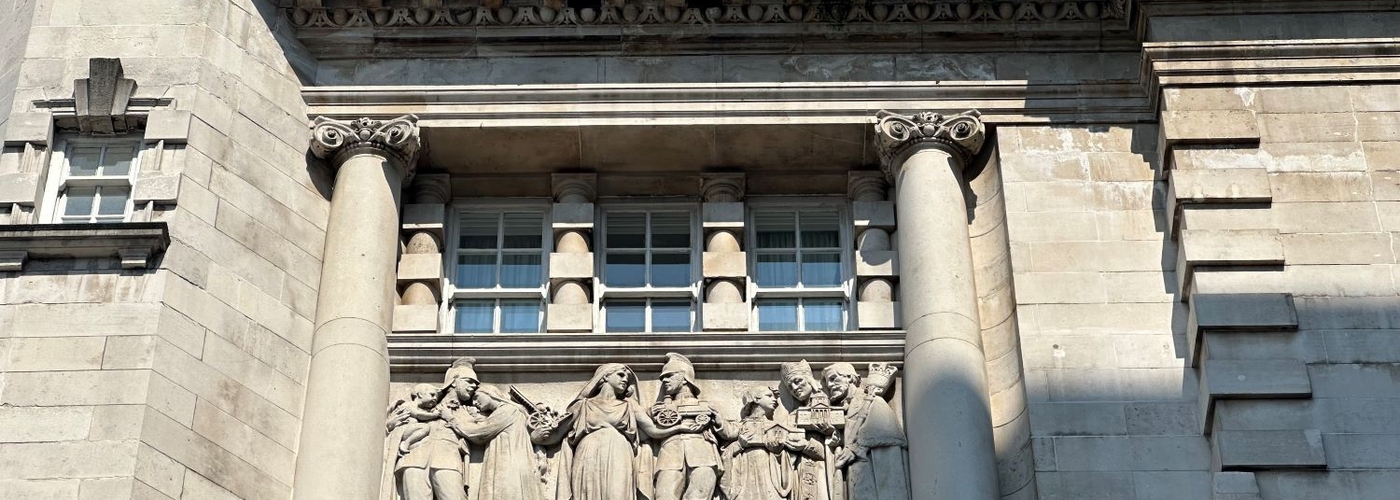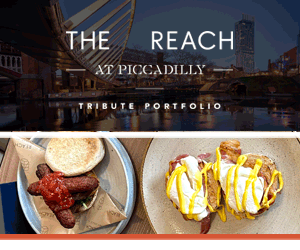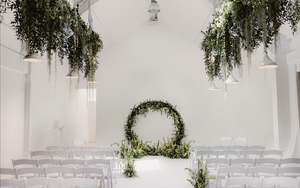Confidentials.com starts a regular look at north west architecture
Rating: Excellent and eccentric exterior, modern interior refurb patchy
What: Royal Insurance building (RIB) now AloftOFT Hotel
When: 1896-1903
Where: North John Street, Liverpool
Who: James Francis Doyle
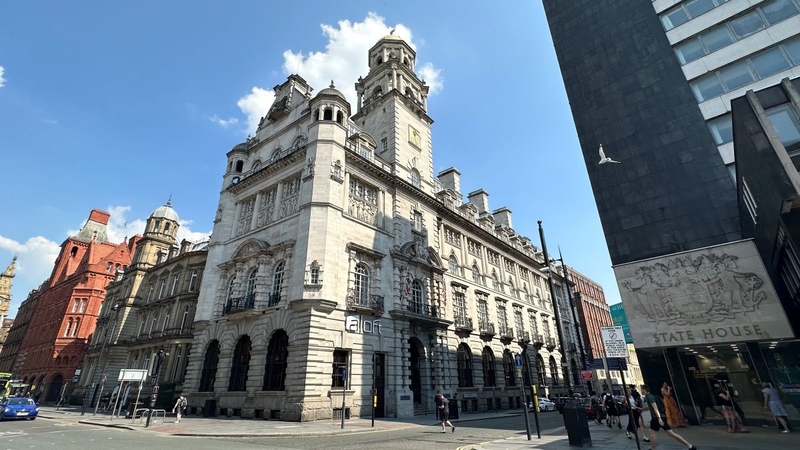
Who was the architect?
It was James Francis Doyle, an architect so Scouse he scarcely worked outside his home area of Merseyside. In Liverpool he was involved in some heroic projects although this building is maybe his masterpiece as its all his.
What do you mean ‘all his’?
Well, the famous White Star Lion building, aka Albion House, on the corner of James Street and the Strand, was something he was involved with along with lead architect Norman Shaw. He got the Royal Insurance Company Building job while working on Albion House through a competition assessed by guess who?
Go on?
Norman Shaw. Sounds very convenient, doesn’t it. Apparently, Signature Living weren’t involved. Royal Insurance Company building has now become a hotel, more of that later, but Doyle left his beloved Merseyside to redesign and upgrade a well-known purpose-built hotel in Wales which then became The Grand Hotel in Llandudno. Sad really, from a 2023 perspective.
Why so?
The poor old Grand is now not so Grand it’s run by Manchester-based building vandals Britannia Hotels. They’re a group that have notoriously taken the chic out of shabby and replaced it with shocking.
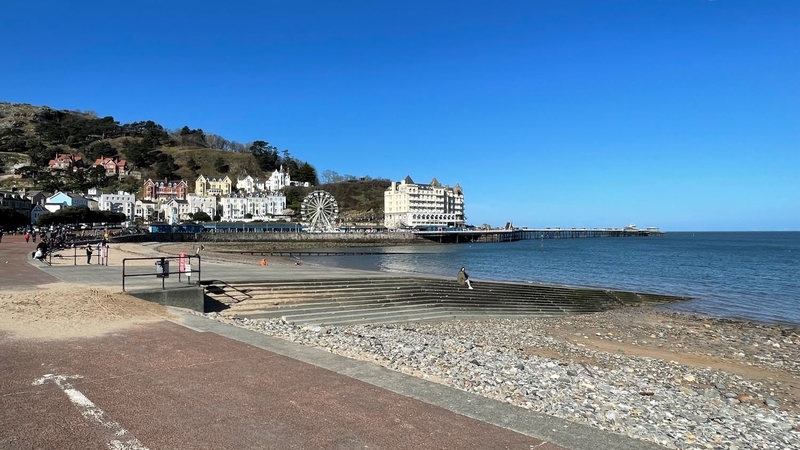
Oh dear. Let’s get back to the Royal Insurance Company building in Liverpool. It was a dead space for a while hasn’t it.
Decades. The insurance company left in 1996, in 2013 it was places on the national Buildings at Risk register. In 2014 the building was rescued and became the Aloft Hotel, the architects tasked with the restoration were Liverpool practice Falconer Chester Hall.
Tell us about the exterior, what’s going on?
This is the principal joy of the Royal Insurance Company building. This a building that is all about bombast, bluster and the neo-Baroque. The latter was an exaggerated style of classical architecture that came out of Renaissance Italy in the seventeenth century, a style that liked it big and bold, with massive cornices, flamboyant columns and overblown sculpture. The style suited Britain at the height of the British Empire down to the ground. Baroque underlined the Imperial moment when a small set of small North Atlantic islands held sway over a fifth of the world’s population. All the vainglory and the hubris is summed up in the monumental design. The Empire wouldn’t last fifty years with the ‘jewel in the crown’ India gaining independence in 1947.
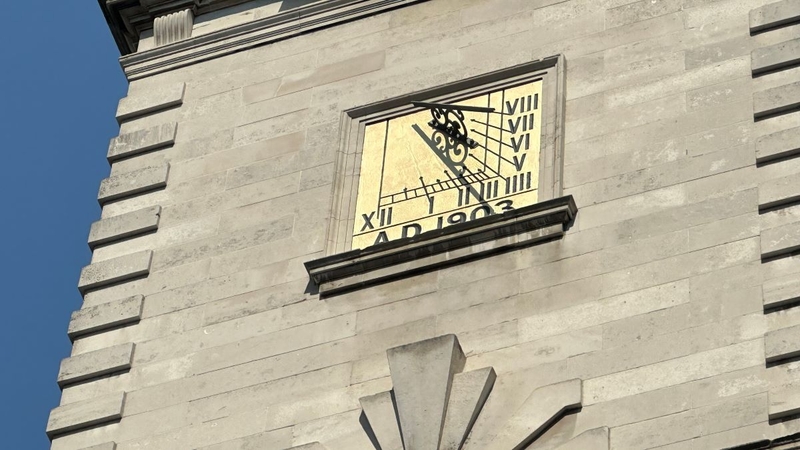
What should people look out for?
First the overall shape, the massing, the grey granite ground floor and the luminous upper stories. Looking down North John Street the façade respects the street but can’t help showing off, like a dandy in a post office queue.
As for the features, well, fill your boots.
There’s a golden domed tower, a fine golden sundial, the finest of the period in the north west of England, there’s the play of the dormer windows in the roof, the march of grand chimneystacks, two more turrets on Dale Street, big-scale fenestration to let in light and a doorway fit for a palace on North John Street.
This is a building that loves itself and it’s clear Doyle must have loved designing the place. It’s as though he had swallowed whole a guide to High Baroque architecture and then spat it out all over the junction of Dale Street and North John Street Company. But maybe the chief delight lies in something else?
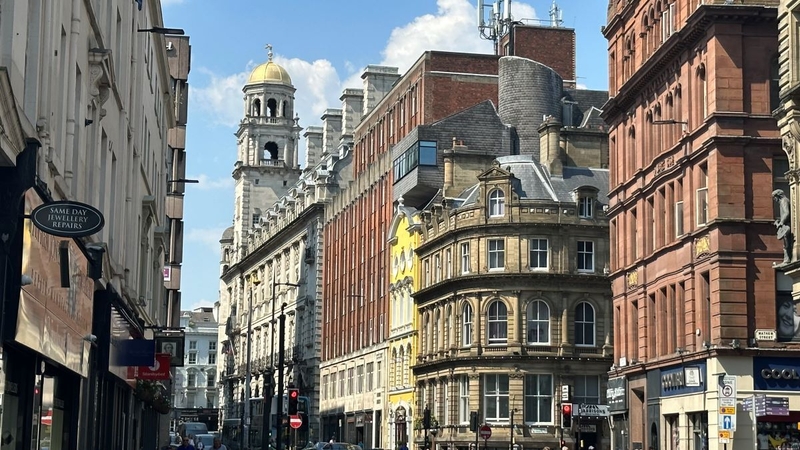
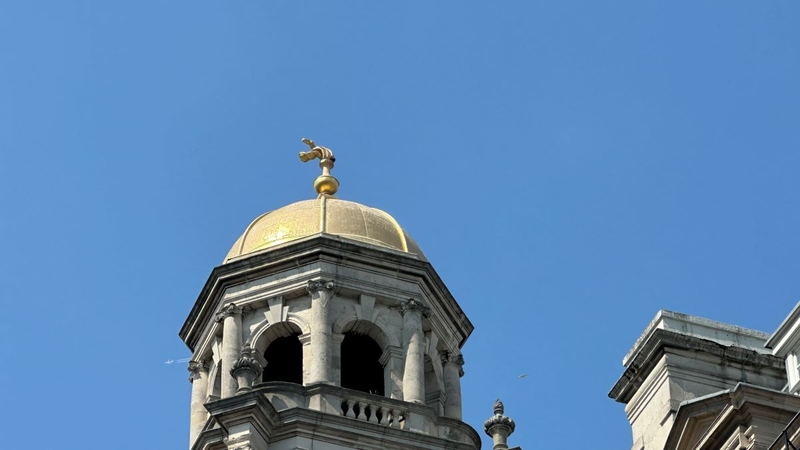
All that sculpture?
Exactly. This is by Charles John Allen who was also responsible for the Victoria Monument in Derby Square. With this sculpture he was having fun like Doyle. The figures and motifs represent the themes of insurance. Fire insurance is a big theme with a metal flame bursting from the golden dome.
Lower down are panels of firemen rescuing a baby for a grateful mother. A female Spirit of Liverpool (perhaps) embraces fire-fighting kit such as a fire tender, while religious and civic figures look on thankful for the fire service but also for taking out some lovely policies from Royal Insurance.
Over the main Dale Street entrance there’s a crazy melange of symbolism which has been officially described as ‘Invention shown giving on the one hand the methods of saving life from fire, and on the other the means of saving property’.
Not sure about.
The kid on the right is all about justice with his scales and sword. The one on the left is carrying a palm which is a symbol for peace or the triumph of peace. Meanwhile the central female figure is carrying an orb sporting a fairy blowing a flute. Answers on a postcard please. Charley A seems to have been on Charley something else at this point.
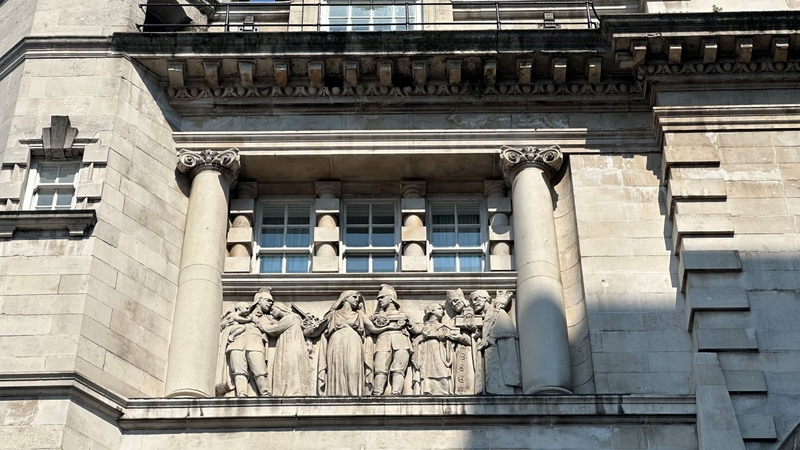
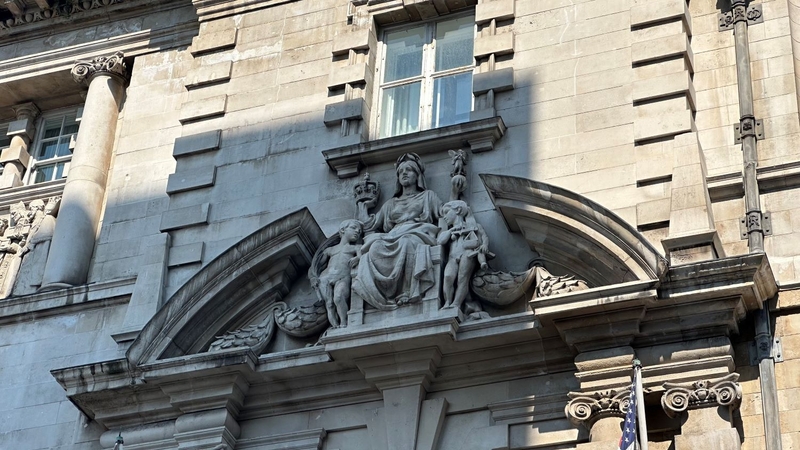
What about the Dale Street side?
The Dale Street façade is equally blessed with sculpture. In the middle Mercury, the God of commerce is ‘causing the elements to pour water on the flame enveloping the world’. The right-hand panel shows the arts and the left hand sciences.
It’s all great fun not that Charles Allen was universally well-thought of.
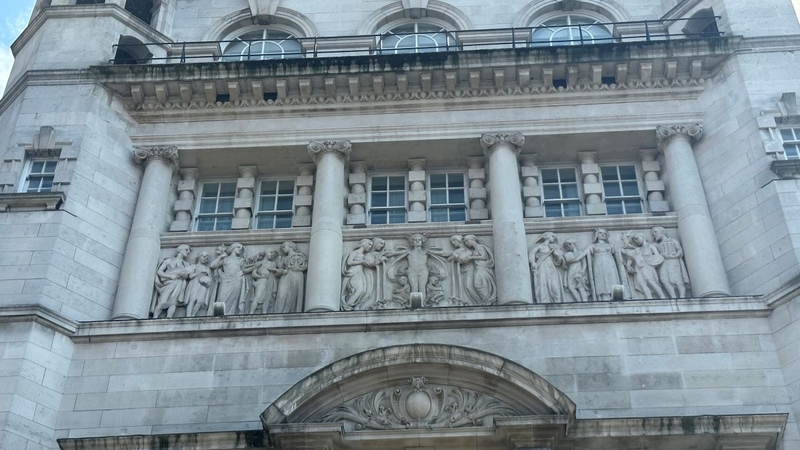
What do you mean?
The most famous early twentieth century commentator on North West architecture and a professor and architect himself, CH Reilly, described Allen thus: ‘a facile person…he had a too pretty wife, who, under a rather simpering manner, was a woman of great decision’. Bitchy indeed. Maybe the figure with the fairy is Ethel Margaret Eaton, Allen’s wife.
What about the inside of the building?
Much remains such as tunnel vaulted Board Room but the main space people can see without booking in is the main General Office, now the reception, bar and restaurant. Look up after climbing the stairs at the entrance and ocular rise up the tower of level above level is a treat.
The architects who restored the building, Falconer Chester Hall, say: ‘The steel frame structure of the building, probably the first in Britain, suspends the floors above from a steel arch worthy of some of the great railway stations, leaving the ground floor column free, and providing a breath-taking, intricately ornamented space.’
Nice note that about the pioneering building technique from Doyle but the elaborate plasterwork in the ceiling is obscured in the bar and restaurant by a dreadful choice of art while the cheap frame divide between bar and restaurant is a sin. It resembles a temporary passport control and the antithesis of Doyle's rambunctious vigour. That needs to be rethought. We should mention one last thing.

About the Royal Insurance Company building?
No, about the architect. He was the grandfather of Anne Ziegler who dueted with husband Webster Booth. They were known as the ‘Sweethearts in Song’ and if you can bear listening to this Youtube clip for longer than a minute Liverpool Confidential will give you a hypothetical two nights at the Aloft Hotel located within the magnificent and entertaining Royal Insurance Company building.
